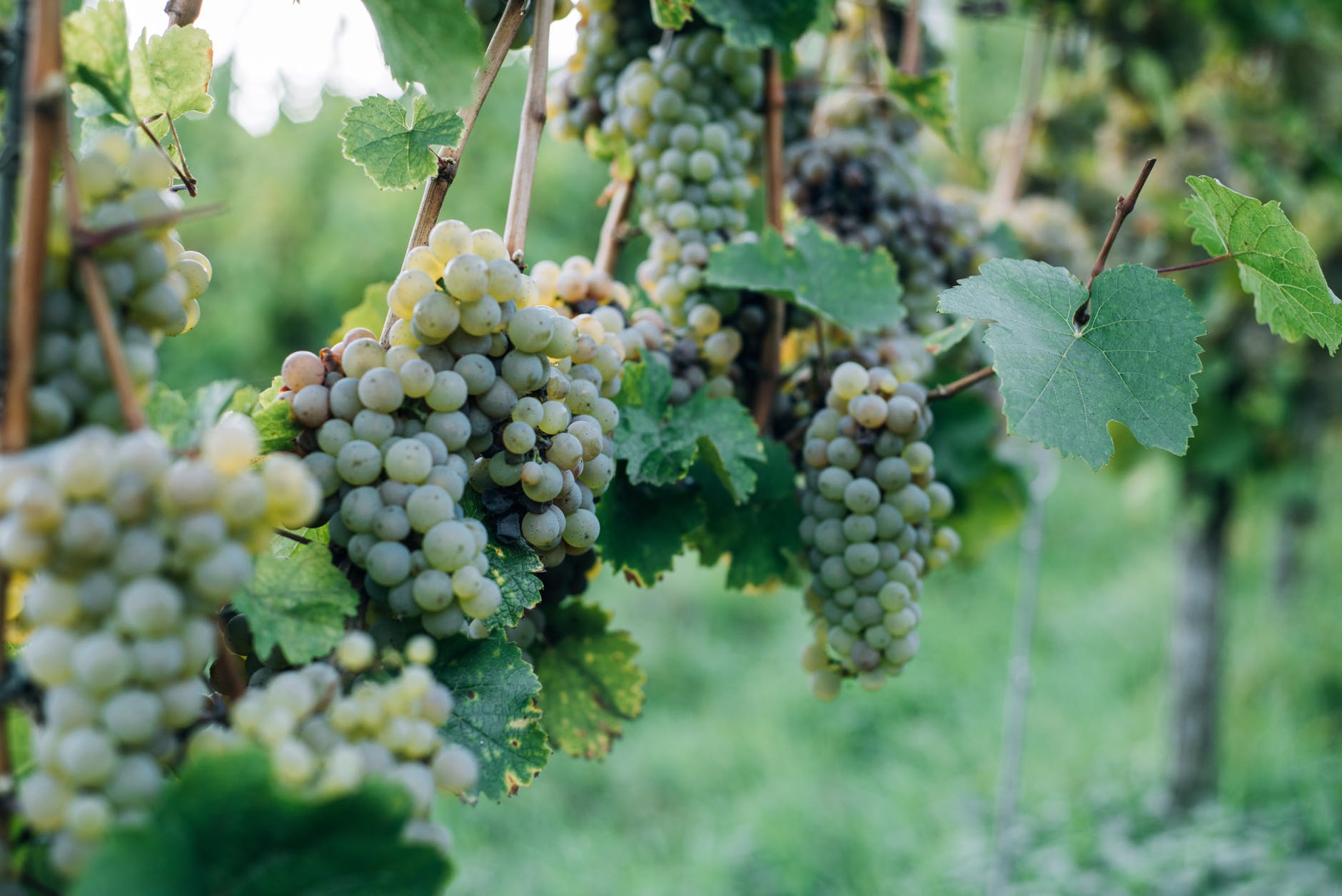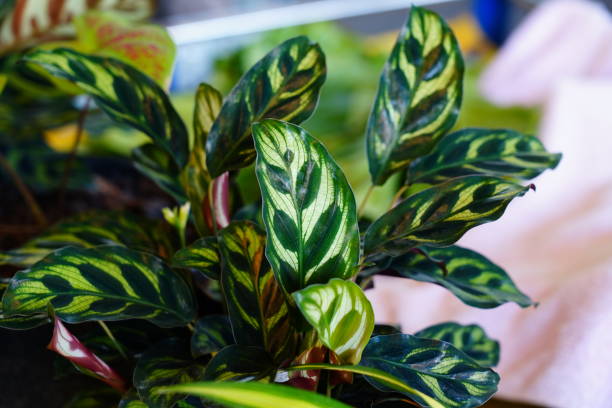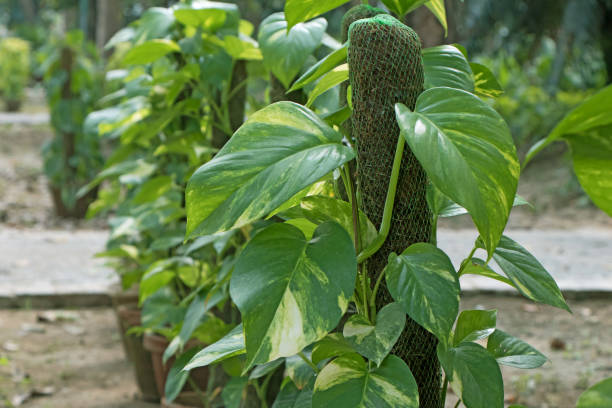How To Grow Grapes In Pots?

Do you want to know how to grow grapes in pots? If yes, read this post for the successful planting of grapevines in your house garden.
Growing grapevines can be beneficial in so many ways. You can make your own grape jelly, jam, or enjoy fruit grape juice at home; even grape leaves can be used for cooking several dishes. If this doesn’t interest you enough, we bet this will- you can make your own grape wine at home.
When grapevines are planted outdoors, they can serve as a beautiful sitting area creating pleasant shade. Grape plants are a long-term investment. It takes at least three years for the grapevines to get fully established when they go into the production phase, and once they do, grapevines can produce fruits for upto 40 years.
You don’t always need a vast area of land to grow grapevines; you can even grow grape plants in the container. It may sound like an impossible task, but apparently, growing grapes in containers is not a complicated task.
Check out the below-mentioned steps to grow grapes in pots by following proper pruning and support methods.
Where do Grow Grapes?
Grape plants usually prefer sunny and warm locations with well-drained soil rich in organic matter. It is also important to maintain good air circulation to prevent grapevine pants from catching diseases.
Choosing Grape Varieties
There Are a huge variety of grape plants available, and choosing one can be an overwhelming process. From European grapes to French-American hybrids, there are so many options out there. Although grape plants are vigorous growers, you still need to keep a few things into consideration when planning to grow grapes in pots like climate, temperature, etc.
Some popular options are flame and concord seedless. Pixie Pinot Meunier grapevine is a perfect choice for small garden places. These dwarf varieties can be easily grown in pots with minimum vine training. Also, they maintain a compact size throughout.
You should always pick a variety that can dwell in your area and is resistant to diseases. Most grape plant varieties are self-pollinating, so with proper care, one single vine can start producing fruits.
Read more:- Tips & Tricks To Grow Vegetables Indoors
Container Requirements
Grape plants are large and vivacious, meaning they require large containers for perfect growth. Always go for a sturdy 15-gallon container minimal with 18-24 diameter. Choose a light-colored ceramic pot to minimize overheating due to hot weather. A plastic or dark color container absorbs too much heat from sunlight and can damage the roots of your plant. Also, make sure that the container has an excellent drainage system to grow grapes.
- SOIL
Table grape plants thrive well in well-drained soil, which is high in organic matter. Start by layering the bottom of the pot with gravel or stones to initiate a good drainage system. The second layer should be of organic material or mulch. Always use good quality pot soil and check the pH requirement of the chosen soil variety. A light mulch layer above the topsoil will help in protecting the roots from any type of temperature fluctuations.
2. LIGHT AND WATER
The sunny and warm area is important for growing grapevines. Grapes need at least 6 hours of direct sunlight each day to start bearing fruits. More sunlight means a bountiful harvest. Remember that grapes are vulnerable to mildew and fungus, so maintaining good air circulation is very important. You need to make arrangements to protect the grapevine plants from wind. Grapes will start growing in zones 3-10 and also in hardy zones 4-9. During winter, remember to keep the grape pot indoors.
It is important to do regular watering until the plant is established. Always keep the soil moist, and do not let it become soggy. Often overwatering a grape plant can cause fungal diseases and also damage your plants. An established grape plant can tolerate dry soil followed by deep watering sessions. If the soil gets too dry, remember to water after every 1-3 days to maintain moisture levels.
How To Grow Grapes from Cuttings in Containers
Usually, grapes are grown from old cuttings. To start, select a cutting from established grape plant hardwood. Take out the cuttings in the early springtime when the grape plant is dormant. You will need a pencil-sized cutting with at least 12 inches in length and containing three leaf nodes.
You can grow grapes by dipping the end of the cuttings into root hormone. Plant the cuttings’ root site in sterile potting soil and keep it moist; however, avoid overwatering. Make sure to maintain a good drainage system in the pots to allow the cuttings to grow properly.
Support
Every grapevine plant required support and training, and this applies to container plants as well. After the first frost, you need to start training your grape plants on the sturdy and tall trellis. When picking a trellis for your grape pots, consider their durability and strength, as your plants will live for years to come. Fan and tall trellises are good options when growing grapevines in pots.
For extra strength, keep your container grape pot alongside the fence or a wall. Supporting grapevines is essential for the optimal growth and appearance of the plants. Imply the Umbrella Kniffen training method on well-established and fully grown gape plants in containers. As the plant keeps growing, start training the vines along with the support or trellis by carefully removing offshoots and suckers.
Pruning
Pruning grapevines is also important for the optimal growth of container plants. Container grapes need aggressive pruning. You have to maintain a central trunk and let only 2-3 vines grow and prune the rest of them. When the plant is in a growing phase, start pruning grape vines early before the leaves start emerging. Keep the grapevines small and get rid of suckers or runners as soon as they appear.
As we all know, growing grapevines in a container leaves limited space for the plant roots to grow fully. Therefore, it is essential to maintain fewer small vines, encouraging the plant to devote more energy towards bearing good fruits instead of focusing on growing larger and more vines.
Fertilizer for Grapes
Established grape plants do not require a lot of fertilization. Your grape plant will be benefited from side-dressing with low nitrogen fertilizer or manure 1-2 times during the summer season. Use a small number of phosphorus fertilizers for grapes to encourage more blooms, which means more fruits.
Fertilizer requirements for grapes can vary depending on the type of plant. Follow a baseline of 10-10-10 fertilizer for each plant as soon as it starts to grow during the spring season. Keep repeating the application of fertilizer for grapes after every four weeks. Also, avoid spreading the fertilizer within one feet area of vines; instead, spread it evenly on a 4-5 feet area.
From the second year and onwards, fertilize your plants at the same time every year. Use 10-10-10 fertilizer during the spring season when the grapevines start to grow. Remember to spread the fertilizer away from the cane, as it encourages the root to spread out a little to reach for fertilizer.
If you notice vigorous foliage, this means excess nitrogen level. In such a case, you should do a soil test to determine the nitrogen level and use low-nitrogen fertilizer for the next few years.
Grape Pests and Problems
Grape plants can catch a variety of diseases very easily. Some of the most common fungal diseases are downy, black rot, botrytis bunch rot, Eutypa dieback, and powdery mildew. The most common bacterial disease is crown gall, and the virus is leafroll disease.
Given the range of disease, the best way to identify what troubles your grape plants is to take a small part of the plant as a sample to your nearby Extension Office during the growing season.
- The first and easiest way to protect your grapevines is by planting disease-resistant varieties as a first-line defense. For instance, the native muscadine grape is resistant to downy mildew as compared to the European Common grape.
- The second effective and important step in controlling diseases and insects is following good sanitation. Destroy or remove any diseases, fruit or leaves, before they spread the disease to new fruits and the rest of the plants.
- Also, using a dormant spray can help in reducing fungal diseases like powdery mildew by killing pathogens that live on grapevines.
Harvesting
Harvesting of grapes should be done when your grape plant is at least 2-3 years old. Usually, grape ripes between late August to late October, depending on the variety of grape and also the climate in which they are growing.
To determine whether the grape is ready for harvest is by tasting one of them. If they taste sweet and nice, it’s to harvest the fruits, and if they don’t, then leave them just as it is for a few days to ripe. When the grapes start to change color after 1-3 weeks, they are fully done. Ripe grapes are soft to touch, but eventually, you should always rely on taste tests.
Final Words:
Growing grapevines in containers are possible; it just requires a little care and maintenance. Grapes tend to catch diseases easily, which is why it is important to keep an eye on any disease leaf or vine and get rid of it as soon as you notice. Also, follow a regular fertilization routine to maximize blooms on your grapevine. After all, more bloom means more fruit.
If you find this article helpful, do not forget to leave a comment down below.






